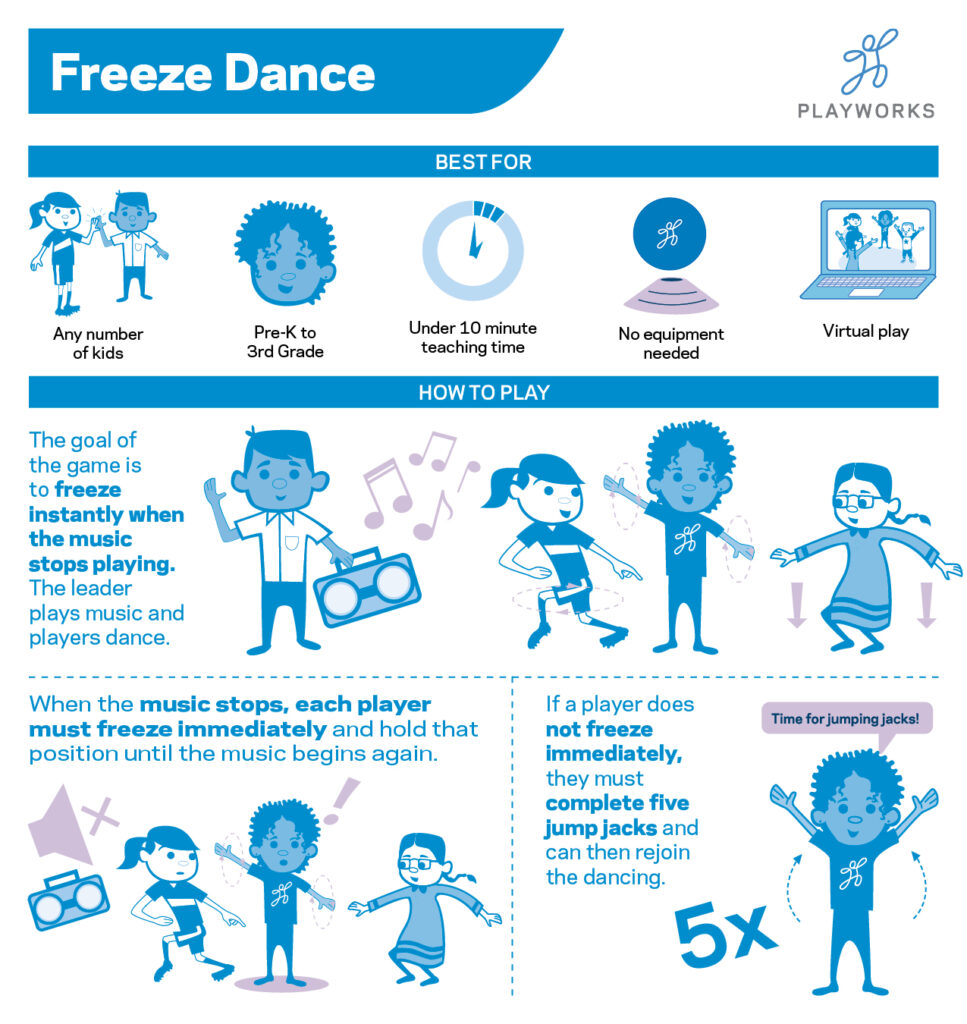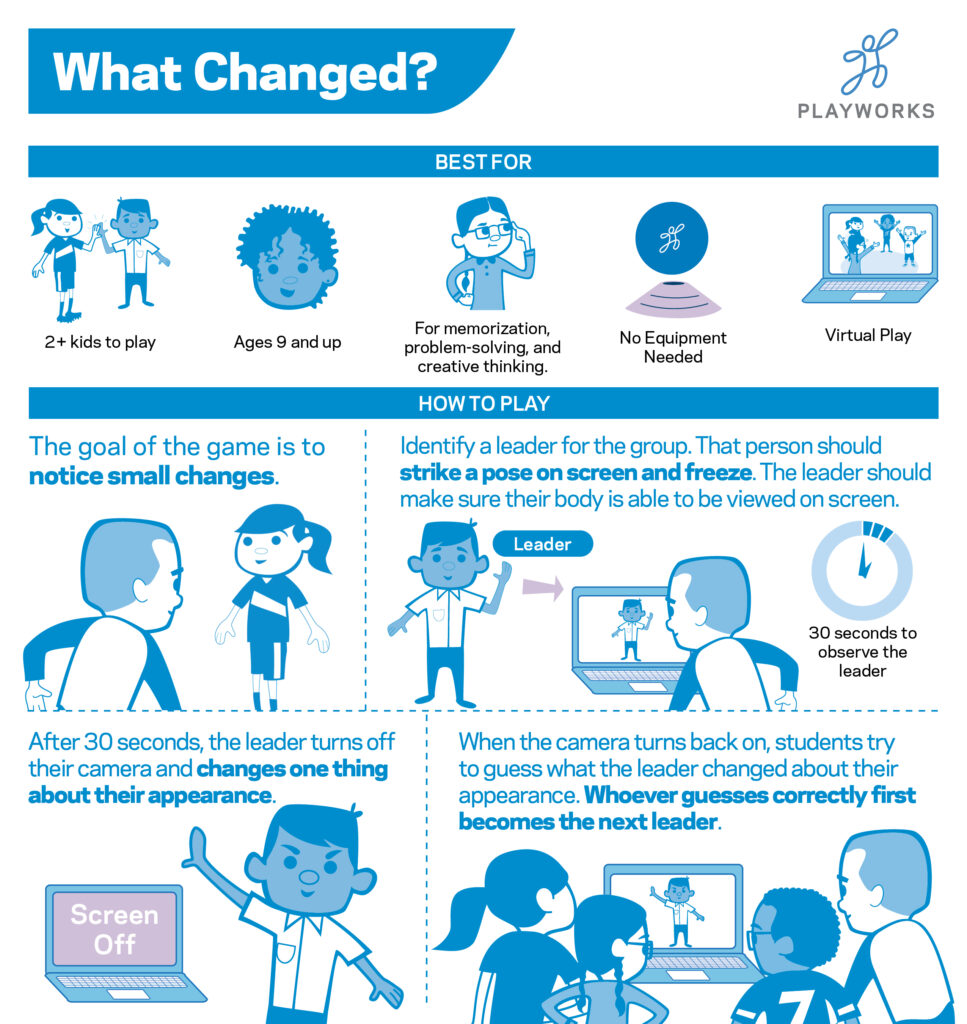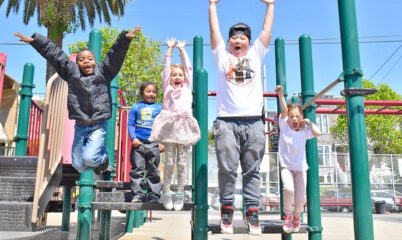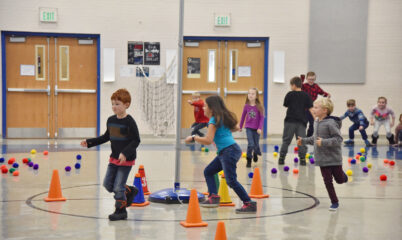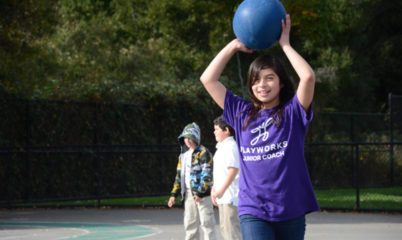By Playworks and UNICEF Kid Power®
When kids’ minds and bodies get active, either while playing or participating in service learning, they experience physical and mental benefits (and support positive academic behaviors). One of the most important social-emotional outcomes is experiencing joy.
Educators and families have risen to the challenge of ensuring kids get social-emotional support and physical activity this year. UNICEF Kid Power and Playworks want to be sure every kid gets these opportunities, and as a result, experiences joy every day.
Physical activity
Playing is one of the ways young kids get the CDC’s recommended 60 minutes of physical activity a day.
“Keeping kids moving is even more important during the pandemic. ‘Regular, moderate-intensity exercise has immune-boosting benefits that may help children to fight off infections, including COVID-19,’” (1, 2). Physical activity also helps kids regulate their mood to experience more joy/happiness, which reduces stress, anxiety, and depression (3–5).
Games get kids moving and support kids’ overall physical health. Many games and activities, including the ones listed below, can be modified for any number of players, abilities, and more.
Get active and try these games today:
- Dance Party with The Masked Singer and The Masked Dancer
- Freeze Dance graphic (pictured left)
- Want a break from looking at screens? Try these Go for a Walk Games
Mental health
Play builds serious skills. It can help prevent or address the effects of trauma. This is essential for kids now
because, “Kids are struggling with change, stress (which can weaken the immune system) and deep human needs for social connection.” Brain breaks, quick games, are a great way to help kids reset so they can refocus on class.
- Name It to Tame It with LeVar Burton
- Play What Changed (pictured right)
Building community
A healthy community is essential to kids’ development. When kids feel safe, empowered, and engaged in a community, they’re more likely to be able to perform well in school and explore the world around them. The pandemic has made the way kids build community different. When wearing masks and social distancing, they might not be able to read each other’s body language. When virtual, they might not have as many opportunities to adjust to new groups, feel like a part of a team, or find comfort in others. Play is a natural way to build community. By playing together, kids and adults can build trust, break down barriers, and accomplish shared goals.
Try these games and activities that help strengthen kids’ social skills and overall sense of community:
- The Big Cheese
- Popcorn Challenge
- Adjusting to New Situations with Spirit Riding Free
- Being Part of a Team with Boss Baby
When teachers and students participate in service learning to accomplish shared goals, they strengthen their classroom community and their connection to their local and global community. Certainly, service learning helps those on the receiving end but helping others also benefits givers—both mentally and physically. MRI scans show neural connections between generosity and joy. Participating in service learning literally activates the brain’s reward centers, generating happiness and decreasing stress, anxiety, blood pressure, and inflammation (6–11).
- Learn how your class can start participating in service learning (for free) through UNICEF Kid Power, which connects kids’ everyday actions with real-world impact.
It works
Playworks is the leading national nonprofit leveraging the power of play to transform children’s social and emotional health.UNICEF Kid Power harnesses philanthropy (and a related sense of purpose) to motivate and empower kids to take charge of their own health and wellbeing.
- Read this white paper to learn more about UNICEF Kid Power.
- Or try it on today. Access Keep Playing now.
References
- Gomez, Jorge Emilio, MD (April 2020). Can Exercise Boost Immune Function in Children? Texas Children’s Hospital.
- Danbury Hospital (April 2020). Keeping Kids Active During COVID-19 Pandemic: What Parents Can Do.
- Ratey, John J. MD (2008). Spark: The Revolutionary New Science of Exercise and the Brain.
- U.S. Department of Health and Human Services. (2018). Physical Activity Guidelines for Americans, 2nd edition.
- U.S. Department of Health and Human Services (October 2020). Centers for Disease Control and Prevention. How Much Physical Activity Do Children Need?
- Post, S.G. (2005). Altruism, Happiness, and Health: It’s Good to Be Good. International Journal of Behavioral Medicine.
- Dore, et al. (March 2017). Helping Others Regulate Emotion Predicts Increased Regulation of One’s Own Emotions and Decreased Symptoms of Depression. Personality and Social Psychology Bulletin.
- Jenkinson, et al. (August 2013). Is Volunteering a Public Health Intervention? A Systematic Review and Meta-analysis of the Health and Survival of Volunteers. BMC Public Health.
- Contie, Vickie (June 2007). Brain Imaging Reveals Joys of Giving. National Institutes of Health.
- Post, Stephen and Jill Neimark (2008). Why Good Things Happen to Good People: How to Live a Longer, Healthier, Happier Life By the Simple Act of Giving.
- Inagaki, Tristen K. and Lauren P. Ross (October 2018). Neural Correlates of Giving Social Support: Differences Between Giving Targeted Versus Untargeted Support. Psychosomatic Medicine.

